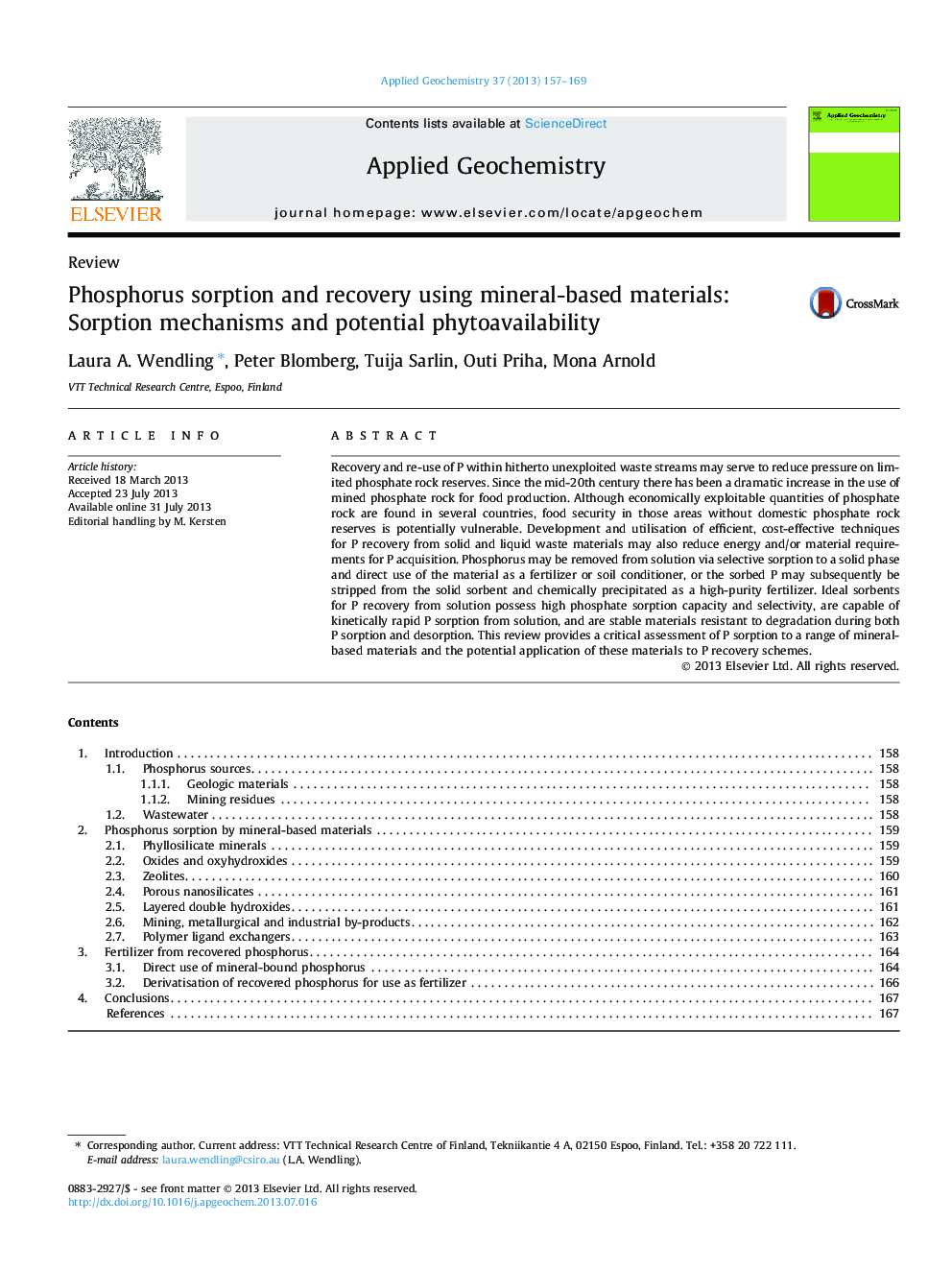| Article ID | Journal | Published Year | Pages | File Type |
|---|---|---|---|---|
| 6335307 | Applied Geochemistry | 2013 | 13 Pages |
â¢Access to a reliable P supply is essential to long-term food security.â¢Recovery of P from solid and aqueous wastes may augment phosphate rock reserves.â¢Phosphorus can be recovered from solution by selective sorption to a solid phase.â¢Solid materials with sorbed P may be used as nutrient-bearing soil amendments.â¢Recovered P can be desorbed and precipitated as a high-purity fertilizer.
Recovery and re-use of P within hitherto unexploited waste streams may serve to reduce pressure on limited phosphate rock reserves. Since the mid-20th century there has been a dramatic increase in the use of mined phosphate rock for food production. Although economically exploitable quantities of phosphate rock are found in several countries, food security in those areas without domestic phosphate rock reserves is potentially vulnerable. Development and utilisation of efficient, cost-effective techniques for P recovery from solid and liquid waste materials may also reduce energy and/or material requirements for P acquisition. Phosphorus may be removed from solution via selective sorption to a solid phase and direct use of the material as a fertilizer or soil conditioner, or the sorbed P may subsequently be stripped from the solid sorbent and chemically precipitated as a high-purity fertilizer. Ideal sorbents for P recovery from solution possess high phosphate sorption capacity and selectivity, are capable of kinetically rapid P sorption from solution, and are stable materials resistant to degradation during both P sorption and desorption. This review provides a critical assessment of P sorption to a range of mineral-based materials and the potential application of these materials to P recovery schemes.
